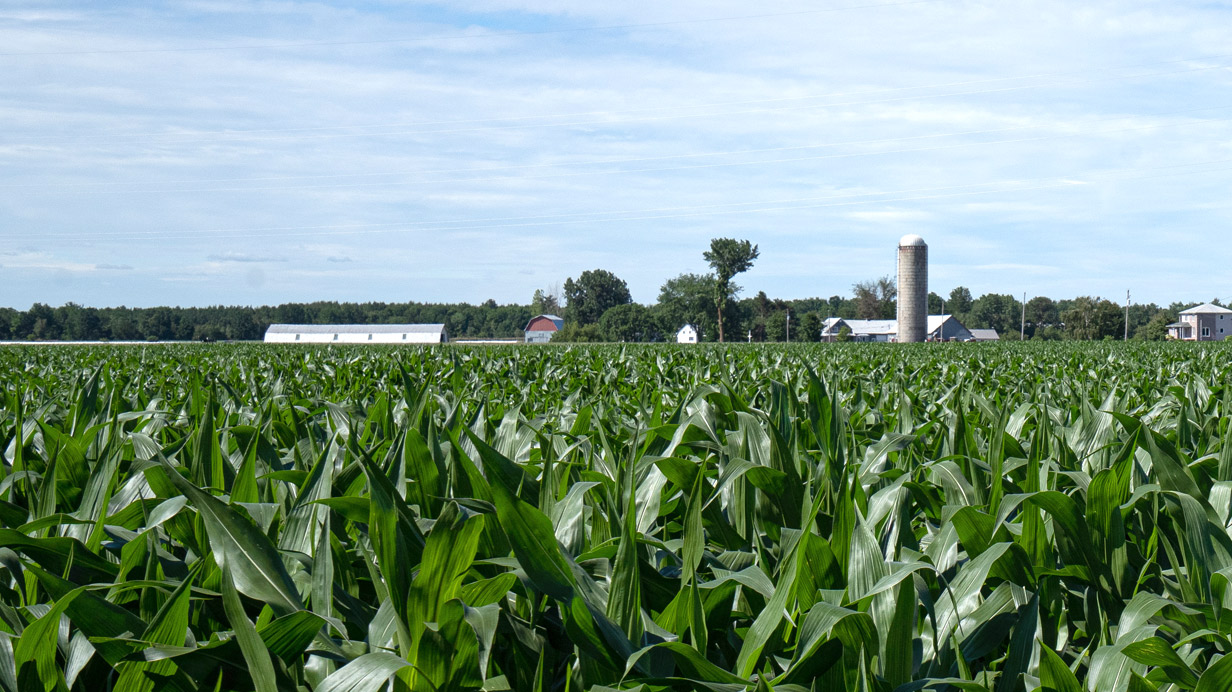Eight ways to control weeds
Some weeds are tough. They are spontaneous, adaptive, colonizing, and invasive. However, they can be controlled or at least minimized by changing some farming practices.
The latest report shows that there are 14 resistant species in Québec. Nearly one in two samples tested in the province since 2011 showed at least one form of resistance. Common ragweed accounts for 47% of the confirmed resistance cases, with the remainder mostly made up of redroot pigweed, roughfruit amaranth, and volunteer canola.
The spread of these resistant weeds is also striking. They are no longer confined to field crops in Montérégie-Ouest and Montérégie-Est but have also been found in vegetable fields in Lanaudière and in commercial crops in Chaudière-Appalaches. Weeds have been found in 13 regions of Québec.
Eight things you can do to help control weeds
Diversify your crop protection
If you’re relying on chemicals, it’s important to vary the way that products work. “Repeated use of the same phytosanitary products, such as RR Corn after RR Soybeans, selects resistant species,” says David Miville. You should be able to go back five years in your field records to facilitate herbicide rotation.
Scout your fields
While we wait for spectral cameras and tractor-mounted sensors to quantify pressure and identify species, the best way to monitor fields is still to walk through them. Walk through the entry points and along the edges of your fields, especially if they are newly rented, and geo-reference your observations. It is also important to understand the biology of each weed so that you know its weaknesses. Some germinate early in a short period of time, while others germinate late and continuously.
Enrich your rotations
Break out of the corn-soybean binomial by swapping land with a neighbour to introduce a winter grain or forage crops. This is a good strategy that has other agronomic and environmental benefits. “Crop diversity is one of the keys to success,” says François Labrie, Agri-Advisor at Sollio Agriculture.
Occupy the space
Cover crops that can occupy the soil before, during, or after row crops can reduce weed pressure simply by competing for space and water. That’s why it’s important to include them in your crop plan.
Till the soil
Soil health, direct seeding, and minimal tillage have gained popularity, but Labrie and Peter Sikkema mention the strategic use of the plow to bury weed seeds so deep that they won’t germinate—the seed of roughfruit amaranth is only 0.7 to 1.0 mm in diameter—provided that you don’t plow and pull up the seeds every year. Mike Cowbrough, Weed Specialist at OMAFRA, says precision weeding is an effective way of killing weeds and avoiding the use of herbicides. Human ingenuity is at work to provide other methods of weed control, such as robotic weeders in field crops, but these will not be short-term solutions.
Destroy at harvest
Breanne Tidemann, Research Scientist at Agriculture and Agri-Food Canada in Alberta, is working on destroyers such as the Seed Destructor and Seed Terminator, which would be installed at the exit of combines and destroy more than 99% of harvested weed seeds. It remains to be seen whether this equipment can be economically justified for your own combine, but contracting companies could benefit greatly from this tool that minimizes the spread of weeds.
Clean your machinery
Thorough cleaning is a must on every field and farm when it comes to new machinery and contract work. The IRIIS phytoprotection website also recommends that infested fields should be sown and harvested last.
Detect resistance early
“The more you look, the more you find,” says Labrie. With the Laboratoire d’expertise et de diagnostic en phytoprotection offering molecular tests since 2018, in addition to traditional resistance tests, resistance (mutations) can be detected directly in the plant genome within a few days, speeding up the discovery of resistant biotypes and allowing immediate action in the field.
Labrie believes that every agri-advisor should be thinking several steps ahead when it comes to weed control. “We cannot rely on new chemical solutions for weed control because the industry is no longer developing new active ingredients, as the existing ones are generally effective and very cheap. So, if you have products that work, it’s time to change herbicide groups and find alternatives. The important thing is not to go through what Ontario went through, where weed infestations spread and there is a lot of catching up to do.”
Source: Coopérateur. The original version of this article initially appeared in the March 2021 magazine.



